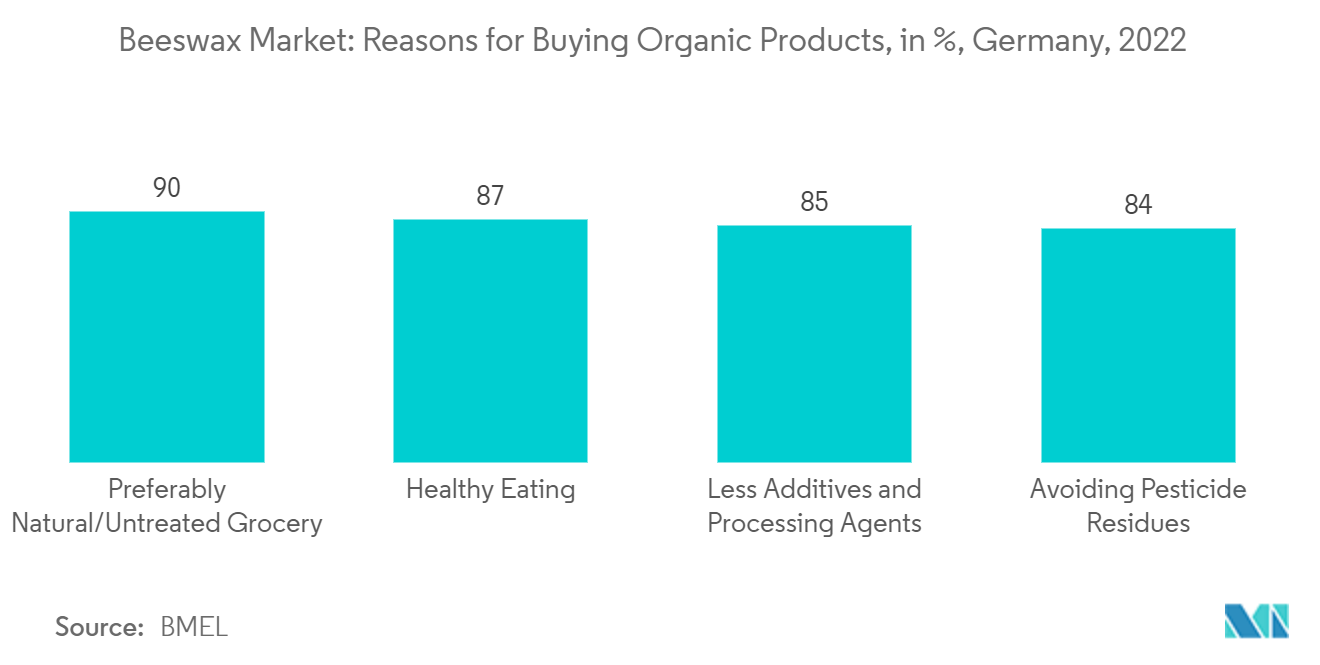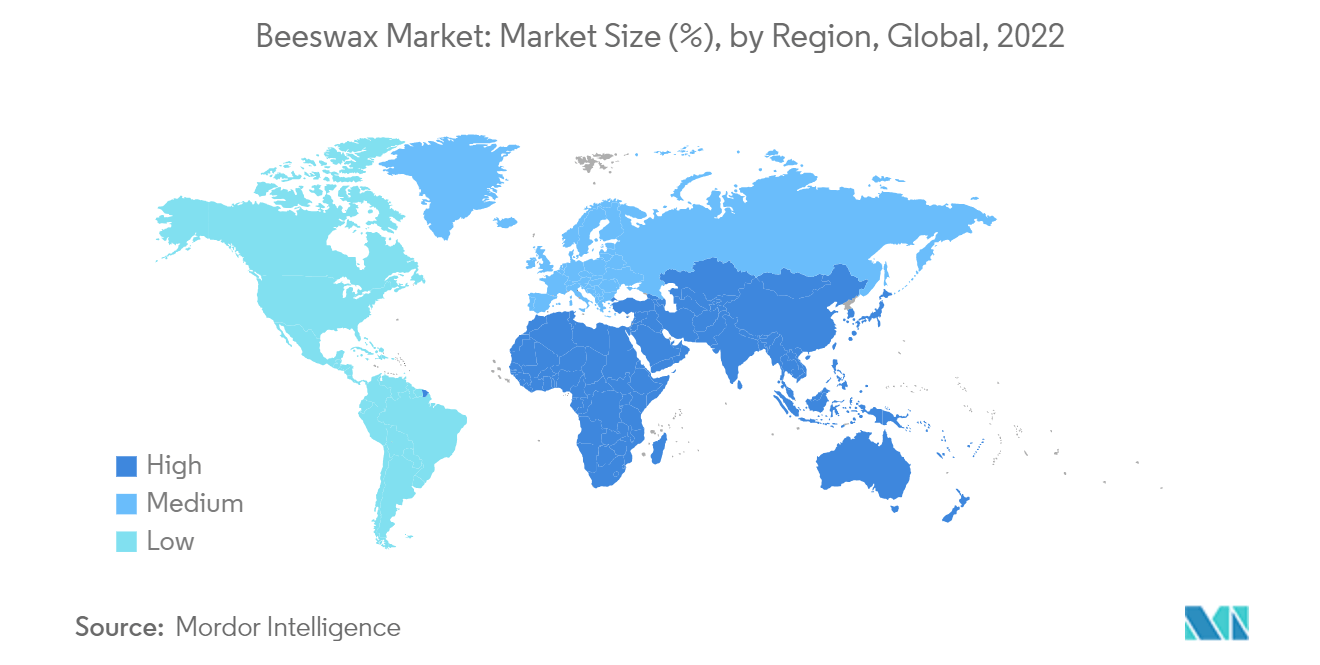Market Trends of Beeswax Industry
Rising Preference for Natural Ingredients
- In recent years, consumers have been willing to pay more for products with natural and clean ingredients due to increasing environmental consciousness. As per the survey by the Research Institute of Organic Agriculture (German: Forschungsinstitut für biologischen Landbau or (FIBL)), the per capita spending on organic products in the Netherlands increased from 71 euros (USD 79.52) in 2019 to nearly 80 euros (USD 95.20) in 2021.
- Thus, manufacturers from different sectors are shifting towards eco-friendly and sustainable materials to fulfill consumer demand and retain their market share. Therefore, there has been a significant rise in the demand for beeswax, a natural product obtained from honeybees with anti-inflammatory, anti-bacterial, and anti-viral properties.
- Increasingly concerned about the use of potentially harmful ingredients in beauty products, consumers are demanding natural and organic alternatives. Consumers also demand that beauty products be produced transparently and sustainably, which has led to the rise of clean beauty. Furthermore, cosmetics companies are looking to capitalize on consumer demand by replacing synthetic chemicals with natural ingredients, providing a positive thrust to the global beeswax market.
- As per the survey published by Organic Trade Association in 2022, the per capita expenditure on organic food and beverages in the United States increased to an average of approximately USD 71 in 2021, compared to the previous year at USD 52. A considerable shift in consumers' preference toward organic and clean-label packaged food products will likely positively influence the demand for beeswax as it is extensively used in commercial food preparation as a wax cover for fermented foods or as an additive.

Asia-Pacific is the Emerging Market for Beeswax
- In the Asia-Pacific region, increasing population, rising income levels of individuals, and a considerable shift in consumers' preference toward organic and natural ingredients are some key factors positively influencing the demand for beeswax in different end-use industries like pharmaceutical food and beverage and cosmetics.
- The cosmetics industry in China is rapidly rising, with color cosmetics and fragrances witnessing impressive growth. China's beauty and personal care sales reached nearly USD 88 billion in 2021. Furthermore, the rapid evolution of e-commerce and retail digitalization presents new growth opportunities for the cosmetics industry, supporting the beeswax market growth.
- As per the International Trade Administration (ITA) of the United States, Japan is the 3rd largest pharmaceutical market in the world. Moreover, the Government of Japan focuses on promoting the healthcare industry under the country's economic revitalization and growth strategy, which will likely enhance the application of beeswax in the pharmaceutical industry and propel the market growth during the forecast period.
- Beeswax is widely used in the food and beverage industry as a food additive, a glazing agent in preparing pastries, a flavor carrier, a food supplement, and a fruit wax cover. As per the Australian Trade and Investment Commission (ATIC), food and beverage is one of the most important industries for the Australian economy.
- Moreover, there is emphasis by food manufacturers on using beeswax as a natural ingredient for food supplements and food additives. Thus, the growth in Australia's food and beverage industry complements the beeswax market growth.


